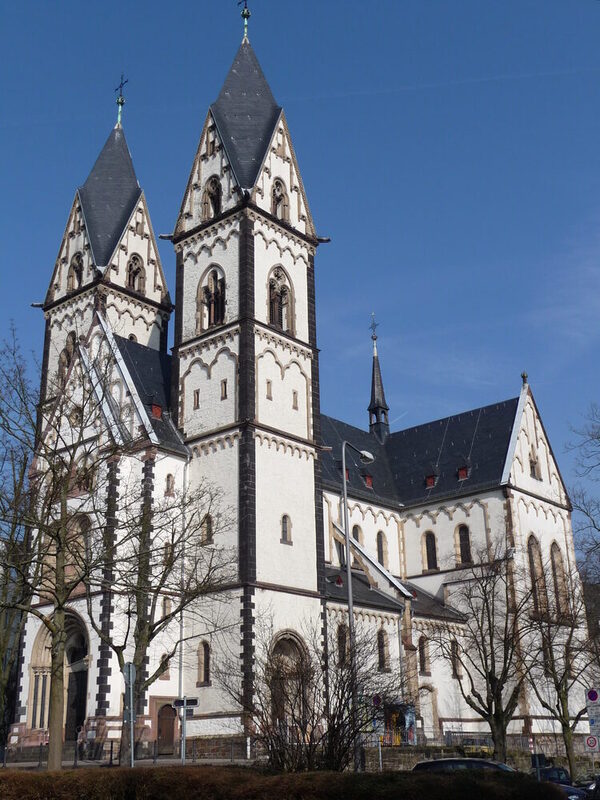Maria Hilf Church
The official name of the church, built in 1893-95, is "Maria Hilfe der Christen". As early as the 1860s, a district grew up around the later church on the upper Platter Straße, which was named the "Maria Hilf" settlement in 1864. Before that, as pictorial evidence suggests, there was a small church or chapel dedicated to the Mother of God near the old cemetery. In 1891, the architect Maximilian Emanuel Franz Meckel (1847-1910) was commissioned to design the church. Meckel had won the competition for the redesign of the façade of Frankfurt's Römer in 1889 and thus achieved a certain degree of fame.
For the church to be built in Wiesbaden, he chose the Romanesque form as a deliberate counterpart to the Marktkirche and the church of St. Boniface. It was the second Catholic church on Wiesbaden soil. He used Limburg Cathedral and the monastery church in Arnstein an der Lahn as well as the Maria Laach Abbey Church as models. After only two years of construction, the new church was consecrated by Bishop Dr. Karl Klein on 05.10.1895.
The interior presents itself as a three-nave pillar basilica with transept and staggered choir. The high-quality furnishings include a small, colorful sculpture of St. Paul in the northern aisle, probably from the 17th century, and a two-meter tall figure of the Virgin Mary made of white Italian marble by Peter Feile in 1918 on the north-eastern crossing pillar. The exterior appearance of the basilica is dominated by the two striking towers. The double projecting gable front with two blinded arched windows and a round-arched group of three windows above each emphasizes the entrance front. The main portal, staggered by means of black marble columns, also features rich profiling. The southern entrance has a figurative design. Its tympanum shows the Lamb of God between two angels. The sculpture was made by Johann Castell from Schwanheim. Individual unplastered architectural elements in natural stone enliven the exterior of the church, which has been home to the KANA youth church since 2005.
Literature
Gizelt, Josefine: Maria-Hilf-Kirche Wiesbaden, Munich and others 1985.
Wolf-Holzäpfel, Werner: The architect Max Meckel (1847-1910). Studies on the architecture and church building of historicism in Germany, Lindenberg 2000.
